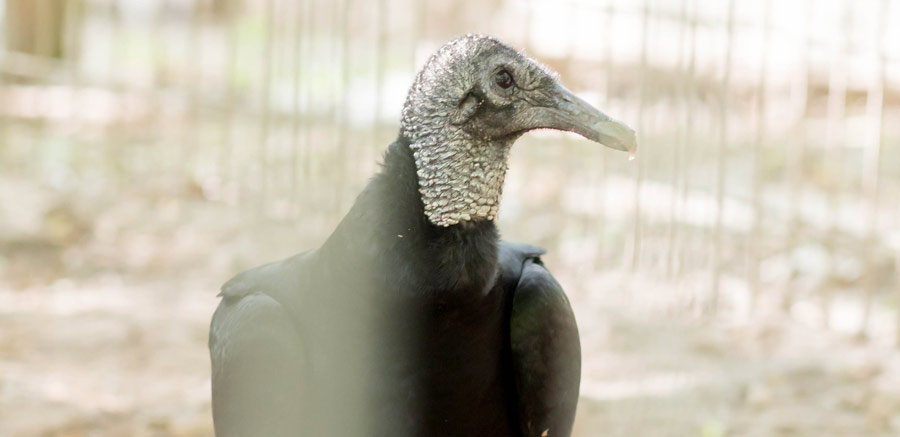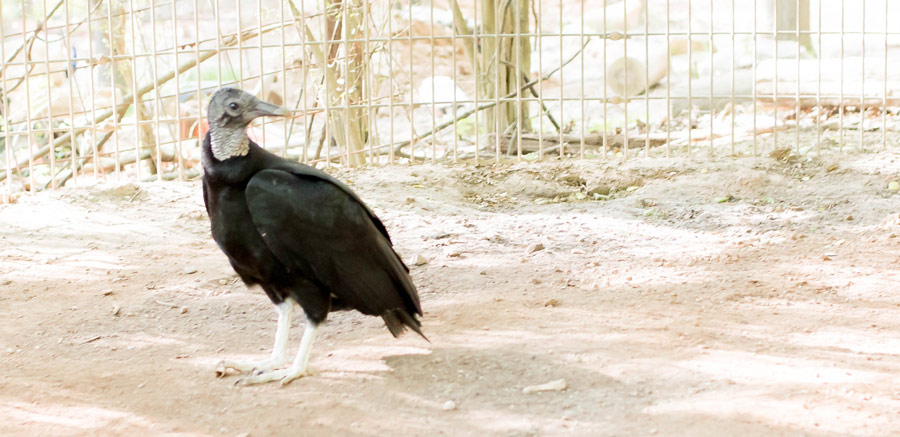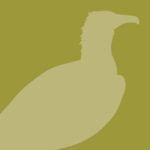
BLACK VULTURE
These quiet scavengers are an important part of our ecosystem… and protected by law.
PROFILE
Elvira and Manson were inherited from the original Yellow River Game Ranch collection. Manson is the male and has more black feathers on his head. Elvira is the female. You will often find Manson trying to feed from Elvira’s mouth during feeding time. Manson has a noticeable limp, but don’t worry, our vet has been on the case and has determined it to be an older injury that just acts up at times.
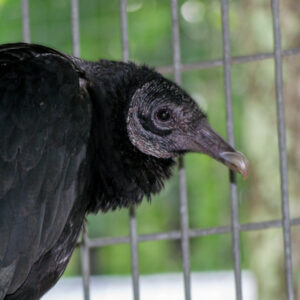
ELVIRA
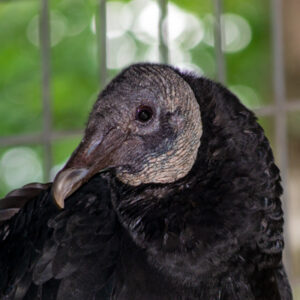
MANSON
OVERVIEW
CONSERVATION STATUS
Least Concern
AVERAGE SIZE
Compared to a 6′ Man
AVERAGE WEIGHT
3.5 – 6.5 lbs
AVERAGE LIFESPAN
10 Years
DIET
Carnivore
REGIONS
North and South America
The range of black vultures’ spreads from the southeastern United States down through Chile and Uruguay in South America. They prefer lowland areas with a mix of open spaces and wooded forests. They can also be found alongside rivers, swamps, and wetlands. It is very rare to see them in mountainous areas.
APPEARANCE
Black vultures are fairly large birds of prey with wingspans of 5 feet. They stand about 2.5 feet tall and weigh an average of 3.5 to 6.5 pounds, slightly less in tropical lowlands. Their feathers are glossy black except for white patches at the base on the underside of their wings. Black vultures have relatively short tails which are squared off. Their heads and necks are featherless, with greyish, wrinkled skin. While they are birds of prey, their talons are flat and relatively weak – not particularly suited for grasping. They have keen eyesight, which aids them in spotting food from high above, but a less developed sense of smell. Black vultures also lack a syrinx, which is a vocal organ, leaving them with only the ability to grunt and hiss.
CHARACTERISTICS
Mainly carnivorous scavengers, black vultures play a vital role in our ecosystem by reducing the amount of disease that occurs on carcasses. They typically feed on carrion but will sometimes eat eggs or young, injured animals. They will occasionally prey on young or newborn calves and are quite aggressive when feeding.
Black vultures are gregarious and roost in large flocks. During mating season (which starts in January but can be as late as September depending on the region they live in) males can be seen circling females with wings partially outstretched, their heads bobbing up and down as they dance around her. Females lay their eggs closer to the ground, sometimes in a wooded area in a hollow log or crevice, and do not build a nest. However, decorate the area with found objects like bottle caps, glass, and other shiny materials they find. Both parents incubate the “clutch,” which usually consists of 1 to 3 eggs.
The black vulture is a protected species in the United States, Canada, and Mexico under the Migratory Bird Treaty Act of 1918. It is illegal to take, kill, or possess them without a permit and punishable by fine and imprisonment.



